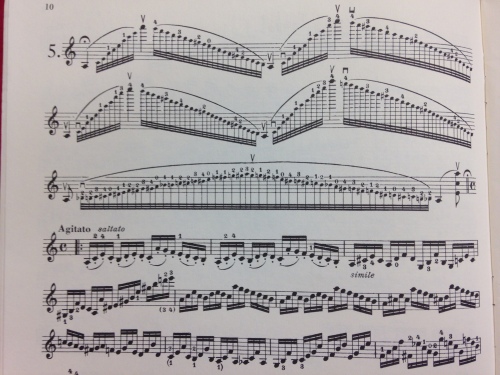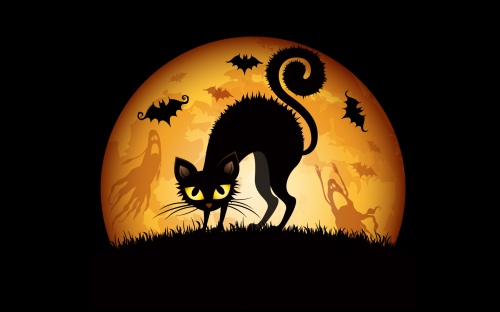
I wonder if Einstein knew his image would be everywhere.
Or, if a being travels at the speed of light and looks in the mirror, what will he see*?
It will come as no surprise to readers of a library blog, that people who work in libraries are nerds and darn proud of it. I would postulate further that if you are reading a library blog post, there is a high degree of probability that you, dear reader, are a proud nerd as well. I will define a nerd as someone who is a collector of knowledge and an active seeker of satisfying that intellectual itch.
My favorite thing about libraries is that materials for satisfying your curiosity are readily available and free.
My current obsession is particle physics and quantum mechanics (oh, I see your eyes rolling right now.) I mentioned this to a fellow music librarian, and he quickly gave me a few suggestions, as he is interested in the same subject. Imagine my surprise and delight! Could he possibly be even nerdier than me?
I have a degree in Molecular Biology, obtained 30 years ago, so my background on this particular subject (get it?) was practically next to nil. I wanted to start at the very bottom, looking for accessible language for the lay person.
There is a lot of material to choose from here at CLP-Main. These were my initial selections:
Particle Physics for Non-Physicists : A Tour of the Microcosmos (audio book) – a series of lectures given by Steven Pollock for the Teaching Company, and the place where I began. I listened to this in my car on my daily commute. It was an excellent introduction and allowed me to follow along with the other material I’m trying to wrap my head around.
The Particle at the End of the Universe by Sean Carroll. This is a very well written and often humorous book about particle accelerators, what makes them work, the physicists behind the theories and experiments, what a Higgs boson is, and how it (or something very much like it) was detected . I listened to this in my car, and instead of getting bogged down by details that I didn’t quite understand, I let the words just wash over me. This allowed me to get a bigger picture of this part of experimental physics, without throwing the book across the room in disgust. (I would never, never actually do this with any book.)
. I listened to this in my car, and instead of getting bogged down by details that I didn’t quite understand, I let the words just wash over me. This allowed me to get a bigger picture of this part of experimental physics, without throwing the book across the room in disgust. (I would never, never actually do this with any book.)
The equation E=mc2 is cited as the basis upon which all of the understanding of experimental and theoretical particle physics rests. I thought I’d like to get a better understanding of just how this works, and why it is true. I also really want to know if space explorers of the future will age at a slower rate than someone left behind on the earth (I mean, come on.) So, I moved on to Mr. Einstein.
 Einstein’s Big Idea. This Nova DVD didn’t really help me to understand the equation, but it did help elucidate the personalities of the scientists behind each of the components of the equation. I liked the way it highlighted female scientists that have made important contributions. This would be a good movie to show girls to encourage them to consider STEM fields.
Einstein’s Big Idea. This Nova DVD didn’t really help me to understand the equation, but it did help elucidate the personalities of the scientists behind each of the components of the equation. I liked the way it highlighted female scientists that have made important contributions. This would be a good movie to show girls to encourage them to consider STEM fields.
 The Meaning of Relativity by Albert Einstein. This slim little volume quickly moved over my head. I will try to tackle this when I have a better understanding of underlying principles.
The Meaning of Relativity by Albert Einstein. This slim little volume quickly moved over my head. I will try to tackle this when I have a better understanding of underlying principles.

An Illustrated Guide to Relativity by Tatsu Takeuchi. Simple illustrations and language that are essential to a visual learner like myself.
 Einstein’s Cosmos : How Albert Einstein’s Vision Transformed our Understanding of Space and Time by Michio Kaku. An excellently written and eloquent book! I’ve only read the first three chapters, and I can already tell that this will be my favorite selection. Michio Kaku is himself quite fascinating.
Einstein’s Cosmos : How Albert Einstein’s Vision Transformed our Understanding of Space and Time by Michio Kaku. An excellently written and eloquent book! I’ve only read the first three chapters, and I can already tell that this will be my favorite selection. Michio Kaku is himself quite fascinating.
On my pile:
 The Physics of the Future by Michio Kaku. I think I’ll listen to the audio book while I’m reading Einstein’s Cosmos. In fact, I think I’ll consume all of his books. This will be my next quest.
The Physics of the Future by Michio Kaku. I think I’ll listen to the audio book while I’m reading Einstein’s Cosmos. In fact, I think I’ll consume all of his books. This will be my next quest.
 Quantum Physics for Poets by Leon M. Lederman and Christopher T. Hill. The authors are very prominent physicists. Lederman won a Nobel prize for discovering a few particles, and is the past director of the Fermi National Accelerator Laboratory. Christopher T. Hill is the current director.
Quantum Physics for Poets by Leon M. Lederman and Christopher T. Hill. The authors are very prominent physicists. Lederman won a Nobel prize for discovering a few particles, and is the past director of the Fermi National Accelerator Laboratory. Christopher T. Hill is the current director.
-Joelle
*This was Einstein’s question, not mine. Here is my simplistic answer based on my current understanding: Fermions (matter) do not behave like bosons (e.g., photons) and cannot travel with the velocity of the speed of light. If you are approaching the speed of light, the mirror is in the same frame of reference as you are, and you will be able to see yourself the same way as if you were standing on earth with a mirror in your hand. If you understand this, you are at a better starting point than I was. If you think I’m way off base, please comment below.














 He starts out by talking about the culture of his old neighborhood and what it meant to be black in the 50s when Motown dominated the scene. George Clinton took the paradigm of how R&B songs were created and recorded and funked it up. He gradually put together a collective of over 50 musicians who worked with him in two separate bands, Parliament and Funkadelic. The sheer volume of records that came out in the ’70s and ’80s speaks to the creative power of Clinton and his collaboration with
He starts out by talking about the culture of his old neighborhood and what it meant to be black in the 50s when Motown dominated the scene. George Clinton took the paradigm of how R&B songs were created and recorded and funked it up. He gradually put together a collective of over 50 musicians who worked with him in two separate bands, Parliament and Funkadelic. The sheer volume of records that came out in the ’70s and ’80s speaks to the creative power of Clinton and his collaboration with 
 Here Come the Warm Jets
Here Come the Warm Jets Taking Tiger Mountain (by Strategy)
Taking Tiger Mountain (by Strategy) 














 Devil’s Dance,
Devil’s Dance, 















 Exploring Jazz Guitar: An Introduction to Jazz Harmony, Technique, and Improvisation
Exploring Jazz Guitar: An Introduction to Jazz Harmony, Technique, and Improvisation
 . I listened to this in my car, and instead of getting bogged down by details that I didn’t quite understand, I let the words just wash over me. This allowed me to get a bigger picture of this part of experimental physics, without throwing the book across the room in disgust. (I would never, never actually do this with any book.)
. I listened to this in my car, and instead of getting bogged down by details that I didn’t quite understand, I let the words just wash over me. This allowed me to get a bigger picture of this part of experimental physics, without throwing the book across the room in disgust. (I would never, never actually do this with any book.)



 The Physics of the Future
The Physics of the Future Quantum Physics for Poets
Quantum Physics for Poets





